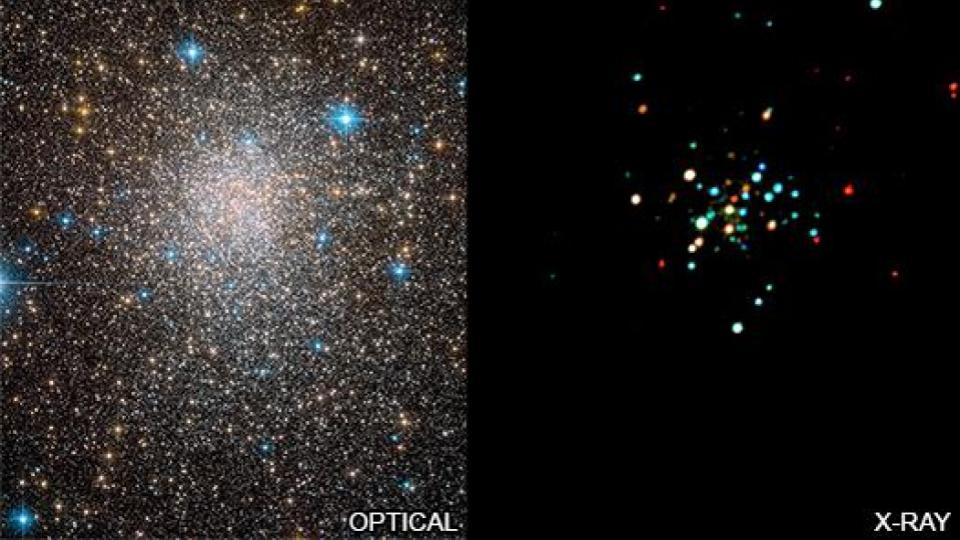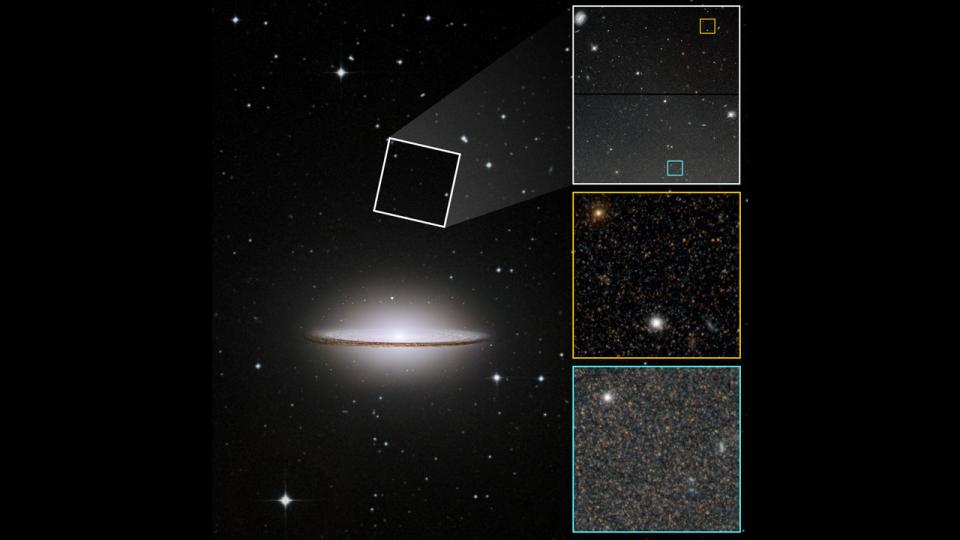Sometimes how news is reported is as much of a story as the stories in that news. Today is that day. I talk about the way two different results are communicated: the discovery of a neutron transitioning from being an x-ray binary to being a millisecond-pulsar, and the observation that the Sombrero Galaxy has a high proportion of metal-rich stars in its halo, indicating it underwent a major merger. We also note that the Planet Finder Spectrograph on the HET is now up and doing science.
A bunch of years ago I started a project to look at the language used in press releases. It wasn’t funded, so I didn’t make a lot of progress, as I plugged away in my spare time. Sometimes, as I read through the news we have flying at us, I think of that work, and think I need to get back to it. Today was one of those days. In my in box, I found two press releases that couldn’t be more different in the language they used to try and alert the world to new science.

- A Cosmic Jekyll and Hyde (Chandra)
The first press release is about a pair of stairs in the globular cluster Terzan 5 that are together undergoing a rarely seen phase in evolution. This system consists of a neutron star and a lower mass companion star. Due to their close orbit, the neutron star periodically steals material from its companion. As it falls toward the neutron star, this material gets swept up into an accretion disk that can be seen in the X-ray. This material will periodically cascade onto the surface of the neutron star, accelerating its rotation and transforming the dead star into a millisecond pulsar that is visible in the radio. This is a gradual process that can take billions of years, as matter spins the neutron star ever faster until it goes from only being seen as an X-ray binary with an accretion disk to only being seen as a pulsar in the radio. As this process nears completion, a star can oscillate between states, sometimes appearing as a pulsar and sometimes not. Astronomers studying Terzan 5 have noted one particular X-ray source, CX 1, that appears to be going through this series of oscillations. Since this is a temporary stage in the life of a rather rare kind of star, catching one in the act of evolving is like catching a nearly extinct species of butterfly at the moment it emerges from a cocoon – you can do it if you look hard enough and long enough, and it will be remarkable when you succeed. This team of researchers, publishing with Michigan State’s Arash Bahrmain as lead author, succeeded in documenting 16 years worth of transitional behavior from Terzan 5, and this is a remarkable dataset that illuminates the complex processes that go into spinning up pulsars in binary systems. The press release focused on the dual nature of this object and did a this system, and didn’t over play what is going on with excess adjectives. Overall, this is a nice science result with an evenly written press release that explains the science instead of selling the science with a lot of flashy hoopla. More of this please.

In contrast, today’s news also included an announcement that the halo of the Sombrero galaxy is populated with metal rich stars, that could only have found their way to this weird location through some kind of a merger event in the past. In astronomy terms, metal-rich just means that a star has formed from materials enriched through multiple supernova and other mass loss events. This material has a higher concentration of heavier elements than our universe formed with. In general, metal rich stars can be found most often in the dense disks of galaxies, while the largely empty empty galactic halos are metal poor. In describing this system, the press release uses words like “unexpected”, “defied expectations”, “surprising”, and “unusual.” Now, to be fair, we haven’t seen galaxies with this large a proportion of their halo stars appearing to be metal rich. This is indicative of some sort of a particularly egregious collision sending young metal rich stars in all directions. We know these kinds of events happen because we see them scattered like so many dead bugs all across the sky, and we also know the managed carnage we see during mergers is only a transitory phase – galaxies merge and then they resettle into new larger shapes, include disks like we see with the Sombrero galaxy – this is how you get most massive galaxies – things merge. It is cool that such a beloved object has had such a wild past, and it is remarkable that this team was able to use photometric metallicities of individual stars to get at this result. I love that we now know that galaxies can kinematically settle into such placid looking shapes after experiencing violent mergers. This is good science that is really interesting. The problem with this press release is they say it is unexpected that this galaxy experienced a major merger, and then throw every adjective at their description. Mergers are how you get big galaxies – mergers are not unexpected. This is what gets me about press releases sometimes. As a scientist, I can read them and think, “That’s the wrong thing to be excited about because I have a context for the research”. Most stories coming out on this result will be missing the context, and miss the point that this system is one more piece of evidence that galaxies grow through hierarchical clustering, and can hide the dynamical effects of these mergers given sufficient time.
Bottom line, apparently I like my press releases with fewer adjectives that aren’t related to the who, what, where, and when of it all. Give me your blues, your hots, and your, smalls, but leave the unusual, unique, and universal behind.
I get why this happens though – that Sombrero story is going to get a lot more coverage, and the good folks at the Space Telescope Institute know exactly how to maximize clicks. Everything they did will get them the press coverage they want. The science here is good, and deserves publicity. I guess, I’m mad that our science needs a stylist to get it attention, and we need to label things “unusual” to get them the views they deserve.

Alright, stepping down from my grouchy soap box, I have one final news item. There is a new instrument putting out science on the Hobby Eberly Telescope. The new Planet Finder Spectrograph is designed to measure the gravitational effects close in planets have on their stars while eliminating the possibility of a star or other object being present. This allows them to validate the discovery of planets found via the transit method, which look at dips in a stars light. Dips alone could be something else, like a massive star spot. By seeing the transit and the gravitational tugs together, it can become possible to confirm planets faster while getting more data with which to characterize the mass and size of the world. In a new paper in the Astronomical Journal, a team of Penn State astronomers has demonstrated the power of the Planet Finder Spectrograph by characterizing 2 Earth mass ice giant orbiting in the habitable zone of a red dwarf star 100 light years from Earth. This object, G 9-40b was originally discovered by the Kepler mission and now gets to move from the suspected planet to column to the list of confirmed planets orbiting alien stars.
<———————>
And that rounds out our show for today.Thank you all for listening. The Daily Space is written by Pamela Gay, produced by Susie Murph, and is a product of the Planetary Science Institute, a 501(c)3 non profit dedicated to exploring our Solar System and beyond. We are here thanks to the generous contributions of people like you. Want to become a supporter of the show? Check us out at Patreon.com/cosmoquestx


 We record most shows live, on Twitch. Follow us today to get alerts when we go live.
We record most shows live, on Twitch. Follow us today to get alerts when we go live.